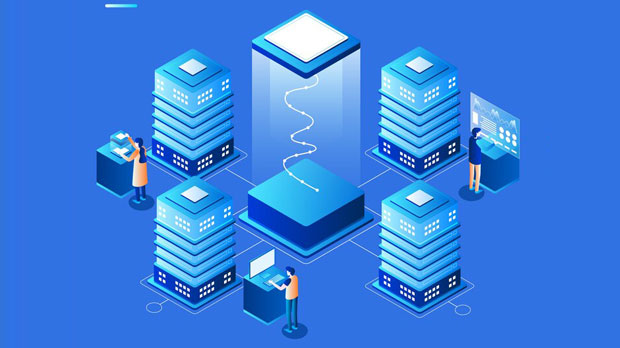In a static proxy environment, the comparison of the connection success rates between miga proxy and PYPROXY has become an important consideration for users looking to optimize their proxy performance. This article delves into the reliability of these two proxy solutions, exploring factors such as their architecture, connection efficiency, failure rates, and overall usability in real-world conditions. IntroductionProxy servers play an essential role in ensuring anonymity, bypassing geographical restrictions, and enhancing internet speed. For users involved in web scraping, data mining, or any tasks requiring IP masking, the reliability of their chosen proxy is paramount. Among the many options available in the market, miga proxy and pyproxy are often compared, particularly when it comes to their performance in static proxy environments.This article aims to provide a comprehensive comparison between miga proxy and pyproxy, focusing on their connection success rates. We will examine the key technical aspects of each proxy solution, their effectiveness under varying network conditions, and how they cater to the needs of users in different industries.What is miga proxy?miga proxy is an open-source proxy solution designed to handle HTTP and HTTPS traffic with a high level of flexibility. It is a Python-based proxy server that allows users to set up and manage their own proxies. miga proxy’s main selling points are its simplicity, configurability, and the ability to integrate with existing Python applications.Users can leverage miga proxy for web scraping, bypassing censorship, or accessing geo-blocked content. It supports both forward and reverse proxy configurations, making it adaptable to various use cases. However, its reliability in terms of connection success rates depends heavily on the infrastructure and the configurations set by the user.What is pyproxy?pyproxy, on the other hand, is a commercial proxy service known for its advanced features, including built-in IP rotation, support for multiple proxy types, and high uptime guarantees. It is designed to provide users with secure, fast, and reliable proxy services, specifically targeting industries like digital marketing, web scraping, and privacy protection.pyproxy offers features such as automatic failover, which ensures minimal disruption in service, and highly optimized server clusters for better connection success rates. Unlike miga proxy, pyproxy is a paid service, which means users can expect more professional support and infrastructure to maintain stable and reliable connections.Connection Success Rates in Static Proxy EnvironmentsIn a static proxy setup, the primary concern is maintaining a stable and reliable connection with minimal interruption. Both miga proxy and pyproxy are designed to handle this environment, but their performance can vary.miga proxy's Connection Reliabilitymiga proxy's connection success largely depends on how it is set up. Since it is open-source and customizable, users have control over the configuration, which can lead to either a stable or unstable connection. The success rate also depends on the quality of the IP addresses used and the maintenance of the server infrastructure. If the user’s server is not optimally configured or suffers from low-quality IPs, miga proxy’s connection reliability may decline.Furthermore, since miga proxy is often used in conjunction with user-maintained servers, the responsibility for ensuring uptime and connection success lies with the user. While miga proxy can be a powerful tool, it may require a higher level of technical expertise to ensure consistent performance in static proxy environments.pyproxy's Connection Reliabilitypyproxy, being a commercial service, offers a more reliable solution in terms of connection success rates. Miga’s proxy pools are maintained by the service provider, meaning that users don’t need to worry about the quality of the proxies or their configuration. Additionally, pyproxy’s infrastructure is built with redundancy and high availability in mind, ensuring that connections are stable even in fluctuating network conditions.pyproxy offers a guaranteed uptime of 99.9%, which directly impacts connection success rates. The service also provides automatic IP rotation, meaning users can switch IPs if one becomes flagged or blocked, further improving the overall reliability of the connection. This feature is particularly important for tasks like web scraping, where IP rotation is crucial to avoid getting banned.Failure Rates and TroubleshootingBoth miga proxy and pyproxy experience occasional failures, but the reasons for these failures can differ.Failure Rates in miga proxyIn miga proxy, failure rates are often higher due to the user-dependent setup. If the server is not maintained properly or the IPs are not well-managed, the failure rates can increase significantly. Additionally, since miga proxy is reliant on the user to manage the proxy list, there is a greater chance that the IPs might be blocked or flagged, leading to connection failures.miga proxy’s failures can often be mitigated with regular maintenance, updating IPs, and ensuring proper configuration. However, for users without the technical skills to troubleshoot, this can become a time-consuming task.Failure Rates in pyproxypyproxy generally experiences lower failure rates due to its robust infrastructure and automatic failover systems. Since pyproxy offers a professionally managed service, users are less likely to experience significant downtime or disruptions in service. However, failures can still occur in extreme cases, such as server outages or network congestion.pyproxy’s support team is available to resolve any issues that may arise, ensuring that connection failures are addressed quickly and efficiently. This professional support adds an extra layer of reliability, making pyproxy a more dependable option for users who prioritize uptime.Cost ConsiderationsOne of the primary differences between miga proxy and pyproxy is the cost. miga proxy is free to use since it is an open-source tool. However, the user must bear the costs of hosting the server, maintaining the proxy list, and ensuring uptime. For users with technical expertise, this can be a cost-effective solution. However, for those who require more advanced features and guaranteed performance, miga proxy may not be the best option.pyproxy, as a paid service, comes with a subscription fee. The pricing is typically based on usage, with different plans available depending on the number of proxies, data usage, and additional features. While the cost is higher, users can rely on pyproxy’s professional infrastructure, which provides a more seamless and stable experience with fewer technical hurdles.Which Proxy is More Reliable for Static Environments?While both miga proxy and pyproxy have their advantages, the choice between them depends largely on the user's needs and technical expertise.miga proxy is an excellent choice for users who prefer an open-source, customizable solution and are capable of managing their infrastructure. For those willing to invest the time and effort into maintaining their own server and proxy list, miga proxy can be a reliable option with a higher degree of flexibility.pyproxy, on the other hand, is a better choice for users seeking reliability without the technical overhead. The commercial service offers higher uptime, better connection success rates, and professional support, making it the more reliable option for those who need a stable and hassle-free proxy service.In conclusion, when comparing the connection success rates of miga proxy and pyproxy in static proxy environments, pyproxy emerges as the more reliable choice for most users. Its professional infrastructure, guaranteed uptime, and support system ensure a high level of stability and minimal connection failures. However, miga proxy can still be a viable option for users with the necessary technical skills and those seeking a more customizable and cost-effective solution. Ultimately, the decision will depend on the user's requirements and their willingness to manage the complexities of each solution.
Oct 15, 2025



































































